
New South Wales, by far the most successful and popular domestic cricket team in Australia, was founded in 1856.
The side that calls the iconic Sydney Cricket Ground their home ground, have won the first-class competition 46 times.
When an international side tour Australia, the 11-time domestic limited-overs champions even play first-class matches against the visitors.
Except for Bangladesh, New South Wales have played against every Test-playing nation.
New South Wales won the inaugural edition of the now-defunct Champions League Twenty20 in 2009.
They have produced some of the finest Australian cricketers over the years and now, let us have a look at the 10 best players who donned the light blue cap.
#10 Mitchell Starc
Australia's current bowling spearhead is a product of New South Wales and in the latest domestic season, Mitchell Starc created history by taking two hat-tricks in the same Sheffield Shield game, against Western Australia.
By dismissing the last three batsmen in each innings, finishing with seven wickets in total, the 27-year-old became the first bowler to achieve the feat in the tournament's history and only the eighth player to do it in a first-class game.
During the 2015 ICC World Cup, the premier pacer took 22 wickets in eight matches as Australia became the second team after India to become the world champions at home.
Consequently, Starc was named Man of the Series and rose to the No.1 spot in the ICC ODI rankings for bowlers.
Overall, in 73 first-class games, Starc has 280 wickets under his belt, whereas in 96 List A games, he has 205 scalps.
#9 Mark Taylor
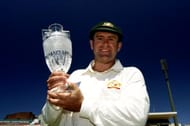
Mark Taylor took over the reins of Australian cricket after the retirement of Allan Border and turned them into the most formidable side in the world.
An analytical mind, solid batting technique and a safe pair of hands in the slips made Taylor a complete package.
After making his Sheffield Shield debut for NSW in 1985-86, Taylor was picked for the 1989 Ashes tour.
With 839 runs in the six Tests, including a mammoth 219 in the fifth Test at Trent Bridge, 'Tubby' recorded the second-best Ashes aggregate after Sir Donald Bradman's 974 in 1930.
He also became the first cricketer to score 1000 Test runs in his debut year.
In a 1998 Test match against Pakistan in Peshawar, the left-handed opening batsman scored 334* and declared the innings. He was widely appreciated for choosing not to go past Bradman's score.
Between 1994 and 1999, the 'Helium Bat' captained Australia in three Ashes series and won all of them.
#8 Allan Border
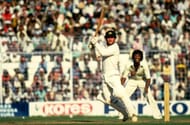
The era of Australian dominance in the world of cricket began under the leadership of 'Captain Cranky' Allan Border.
When he took over the captaincy in 1984, the Australian team were going through a rebuilding phase.
In 1989, the underdog Australia toured England to compete in the Ashes series and ended up winning the series 4-0.
The Wisden Cricketer of the Year in 1981, Border was named Australian of the Year for leading his nation to a historic Ashes victory.
In a 1993 Test match against New Zealand at Christchurch, he went past Sunil Gavaskar's tally of 10122 runs to become the highest run-getter in Tests.
In the year 1994, Border retired as the most-capped and highest run-scoring cricketer in history.
#7 Brett Lee
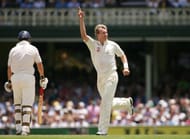
Capable of delivering 160 km/h thunderbolts, Brett Lee stood out in an era that was dominated by mediocre medium-paced bowlers.
Born and raised in Wollongong, New South Wales, Lee was first selected in the Australian Under-19 team for a tour of India in March 1994.
In 1997-98, Lee made his first-class debut for NSW in a Sheffield Shield match against Western Australia.
Lee made his international debut in the Boxing Day Test against India 1999 and finished with figures of 5/47.
Before retiring from the longest format of the game in 2010, he picked up 310 wickets from 76 Tests, becoming the fourth Australian to cross the 300 mark in Test cricket after Shane Warne, Glenn McGrath and Dennis Lillee.
As far as ODIs are concerned, Lee ended his career as the joint highest wicket-taker along with McGrath with 380 wickets.
For his contribution to his country's cricket, Lee received the Bradman Young Cricketer of the Year award in 2000, Wisden Cricketer of the Year in 2006, Australian Test Player of the Year in 2008 and Allan Border Medal in 2008.
#6 Glenn McGrath
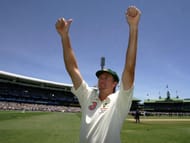
In a career spanning over 14 years, Glenn McGrath inspired an entire generation. He ripped apart most of the formidable batting sides in the world and became a vital cog in an all-time great Australian side.
After playing just eight First-class matches for New South Wales, McGrath made his debut at the age of 23 against New Zealand at Perth in 1993, which was followed by his ODI debut against South Africa at the MCG.
Two years later, in 1995, McGrath was leading Australia's pace attack, claiming 17 wickets on the tour of West Indies.
In the 1997 Ashes, McGrath and his partner in crime Shane Warne wreaked havoc. The lanky pacer destroyed England by taking eight for 38 at Lord's.
Later that year, he bagged 26 wickets and was declared the Player of the Series in the ICC World Cup, as Australia were crowned the world champions.
In January 2013, McGrath was inducted into the ICC Hall of Fame.
Known as 'Pigeon', McGrath forged a brilliant career before retiring as the most successful fast bowler with 563 Test wickets.
#5 Michael Clarke
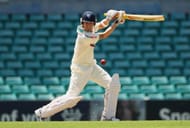
Michael Clarke will go down in history as one of sharpest cricketing minds ever produced by Australia.
Great batting prowess, leadership skills par excellence and a tactical mind made Clarke Australian cricket's blue-eyed boy.
The batting prodigy announced his arrival on his Test debut itself, cracking 151 against India in a 2004 Test match at Bangalore.
A month later, Clarke scored a century in his debut Test at home against New Zealand at the Gabba, becoming one of the few cricketers to achieve this feat.
In a stellar 11-year international career, Clarke played 115 Tests and scored 8643 runs including 28 centuries.
Clarke led Australia to a 5-0 whitewash of England in 2013-14, the first Ashes clean sweep in 81 years.
Following their ascent to the summit of the ICC ODI rankings in 2014, Australia won the 2015 World Cup under the leadership of Clarke.
#4 Mark Waugh
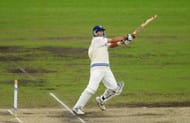
Mark Waugh's elegant cover drives were a treat for sore eyes. Known to be the most entertaining batsman of his era, Mark was naturally gifted and had the most unbelievable pair of hands.
Known as Junior, Mark was born four minutes after his twin brother Steve Waugh.
The Waugh brothers, who were the first pair of twins to play Test cricket, were picked by New South Wales during the 1984-85 season.
Interestingly, the Waugh brothers played their last ODI, First-Class game and List A game together.
In the 1990-91 Ashes series, Steve was dropped from the team to make way for Mark. The younger Waugh rose to the occasion by scoring a century on debut. However, later in 1991, Steve returned to the Test team and remained a fixture thereafter.
A naturally attacking hitter of the cricket ball, Mark was an ideal number four batsman in Tests and a perfect opener in ODIs.
At the time of his retirement in 2002, Mark had scored 18 ODI tons, maximum by an Australian and had bagged 181 sublime Test catches, a world record at that time.
#3 Steven Smith
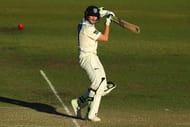
The current Australia skipper and the best batsman in the longest format of the game, Steven Smith initially earned plaudits as a bowler, finishing as New South Wales' leading wicket-taker in the 2007-08 KFC T20 competition with nine wickets.
The leg-spinner found his true calling in 2009, a year before his international debut, as he scored four Sheffield Shield hundreds for NSW.
2015 was the best year of Smith's seven-year-long career so far.
His maiden double hundred during the Ashes made him the third Australian to reach 200 at Lord's after Donald Bradman and Bill Brown.
With 402 runs, Smith was the leading run-scorer during the 2015 ICC World Cup. He remains the only player to have hit a fifty in the quarterfinal, a hundred in the semi-final and a fifty in the final of a World Cup.
In 2015, Smith won the prestigious Sir Garfield Sobers Trophy after being named the ICC Cricketer of the Year.
He was also adjudged the ICC Test Cricketer of the Year, which made him only the seventh cricketer in the world to bag the two coveted prizes in the same year.
#2 Steve Waugh
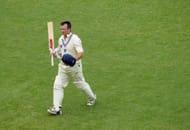
Steve Waugh started his international career at the age of 20 but did not impress until the summer of 1989.
Going into the 1989 Ashes series, Steve had a batting average of 30.52 in 26 Tests and no century. However, in the series, it became impossible for England to dismiss Waugh as he struck 177* and 152* in the first two Tests.
In 1991, he was dropped to make way for his younger brother Mark but later that year Steve made a comeback and became a mainstay in the Australian Test team.
He went on to become Australia's most successful captain, winning 41 of his 57 Tests making his success rate an enviable 71.92 percent.
Under his leadership, Australia became the number one team in both the formats of the game.
The single-minded street-fighter also led Australia to victory in the 1999 World Cup, the first of three successive triumphs.
#1 Sir Donald Bradman
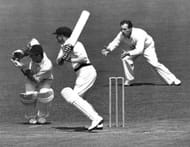
Sir Donald Bradman, the world's greatest Test batsman, started his playing career with New South Wales.
Bradman made his international debut against England at the age of 20 in 1928.
Bradman's 20-year cricketing career was symbolized by his batting average of 99.94 in Test cricket.
If he had managed to remain not out or score four more runs during his final Test innings at The Oval in 1948, Bradman would have ended with an average of 100.
Till date, his aggregate of 974 runs at an average of 139.14 in the 1930 Ashes, remains the best by a player in a Test series.
Bradman's first Ashes series remains the highlight of his much-celebrated career as his knocks of 254 at Lord's, 334 at Leeds and 232 at The Oval crippled England, helping Australia win the five-Test series 2-1.
In 1949, Bradman became the first Australian cricketer to receive a knighthood.
Looking for fast live cricket scores? Download CricRocket and get fast score updates, top-notch commentary in-depth match stats & much more! 🚀☄️
